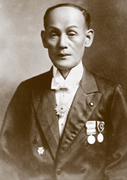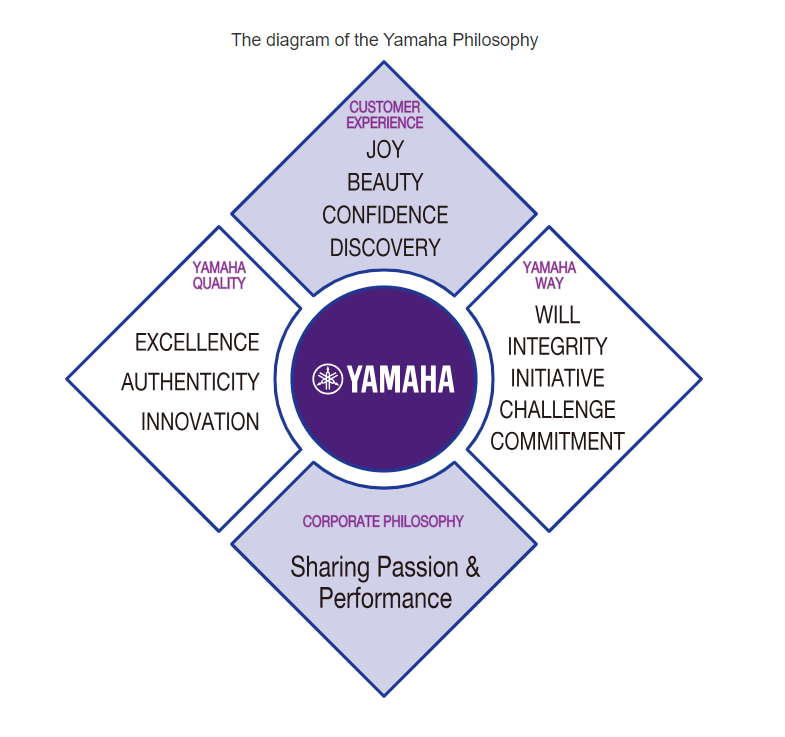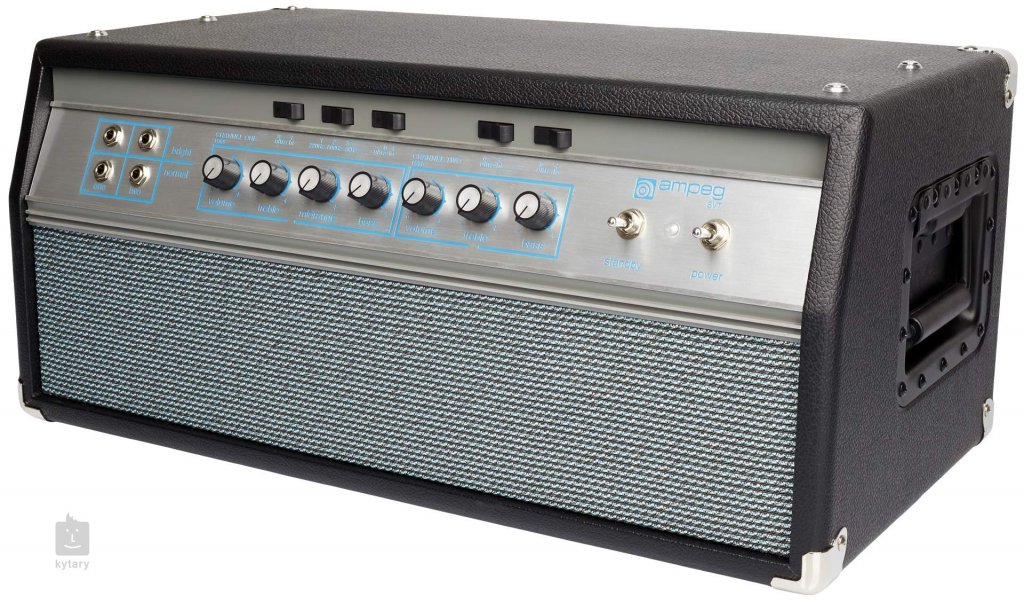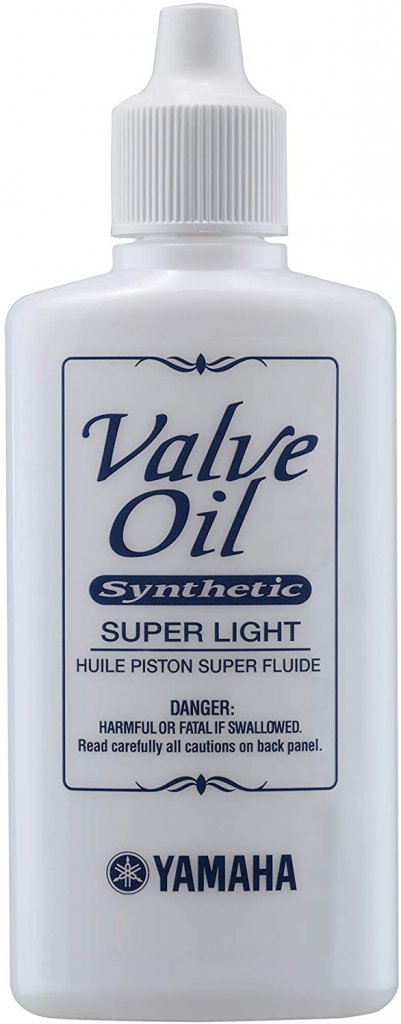Karfan er tóm.
Yamaha
Yamaha's history began when its founder, Torakusu Yamaha, repaired a broken reed organ in 1887. Shortly thereafter, he successfully completed the first reed organ. 
More than 130 years after our founding in 1887, we defined the Yamaha Philosophy as the philosophical framework that underpins business management at the Yamaha Group.
Furthermore, in 2019, we established our new brand promise “Make Waves” to capture that special moment when our customers’ hearts tremble.
The Yamaha Philosophy is the philosophical framework that forms the foundation for business management at the Yamaha Group.
The Yamaha Philosophy is made up of the “Corporate Philosophy,” “Customer Experience,” “Yamaha Quality,” and the “Yamaha Way.”
The Corporate Philosophy and Customer Experience express different aspects of the meaning behind the existence of the Yamaha Group, while the Yamaha Philosophy serves as its foundation.
Yamaha Quality and the Yamaha Way serve as the driving force behind the Yamaha Philosophy, and are intended to offer guidance for Yamaha Group employees in their daily work.
We utilize the Yamaha Philosophy as a foundation to draw from, and try to think from the customer's viewpoint as we build on unique expertise and sensibilities, as well as the reputation for unparalleled reliability gained during our long history. Our goal in doing so is to consistently provide high quality products and services that exceed the expectations of our customers, and to create excitement and cultural inspiration together with people around the world.

Corporate Chronology
| 1887 | Torakusu Yamaha builds his first reed organ![[ Image ] 1887:Torakusu Yamaha builds his first reed organ](https://www.yamaha.com/en/about/history/images/pict_1887.jpg) |
|---|---|
| 1897 | Nippon Gakki Co., Ltd. (current Yamaha Corporation) is established with capital of 100,000 yen |
| 1900 | Begins production of upright pianos |
| 1949 | Lists its shares on Tokyo Stock Exchange |
| 1954 | Establishes Yamaha Music School and holds pilot classes![[ Image ] 1954:Establishes Yamaha Music School and holds pilot classes Produces its first HiFi player (audio product)](https://www.yamaha.com/en/about/history/images/pict_1954.jpg) Produces its first HiFi player (audio product) |
| 1955 | Establishes Yamaha Motor Co., Ltd. (Splits off the motorcycle division) |
| 1958 | Establishes first overseas subsidiary in Mexico |
| 1959 | Begins production of sports equipment Begins production of electronic organ |
| 1960 | Establishes Yamaha International Corporation (current Yamaha Corporation of America) |
| 1962 | Begins recreation business |
| 1964 | Begins production of lifestyle-related products |
| 1965 | Begins production of wind instruments |
| 1966 | Yamaha Music Foundation is established Expands into Europe with the founding of Yamaha Europa GmbH, in West Germany |
| 1968 | Issues shares at market price for the first time in Japan |
| 1971 | Begins production of semiconductors |
| 1987 | Changes company name to Yamaha Corporation to mark the 100th years in business |
| 2002 | Establishes Yamaha Music & Electronics (China) Co., Ltd. Establishes Yamaha Music Holding Europe GmbH (current Yamaha Music Europe GmbH) |
| 2005 | Acquires Steinberg Media Technologies GmbH |
| 2007 | Establishes music entertainment business holding company |
| 2008 | Acquires L. Bösendorfer Klavierfabrik GmbH Acquires NEXO S.A. |
| 2010 | Renews Yamaha Ginza Building, a complex including shopping area, concert hall, music studio etc. Transfers shares of the lifestyle-related products subsidiary Completes integration of Japanese piano factories to Kakegawa |
| 2012 | Completes integration of Japanese wind instrument factories to Toyooka 125th years in business (October 12th) |
| 2013 | Establishes Yamaha Music Japan Co., Ltd. |
| 2014 | Establishes domestic musical instrument and audio equipment production subsidiaries after the split-off and merger Acquires Line 6, Inc. and Revolabs, Inc. |
| 2015 | Transfer of semiconductor manufacturing subsidiary |
| 2018 | Acquires Ampeg brand Constructs “Innovation Center” research and development base |





